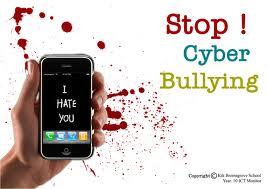
Since a child spends a majority of his or her waking hours at school, it bothers me that many schools are so reactive when it comes to helping a child at risk. To wait for obvious signs of distress is a policy that flirts with disaster. I have long called for schools to help students who have difficulties making friends or who are undergoing challenges such as radical change, seperation of their parents or those going through a breakup of a friendship or relationship. Instead of waiting for the students to ask for help, is there anything wrong with offering it?
Suicide often occurs when the victim feels that nobody cares or understands. What better way to show you “get it” than to initiate contact with a student that might need it?
Suicide is not a problem that schools can afford to blame on home issues. It is very much an issue that needs to be tackled through a partnership between school and home:
A SUICIDE prevention policy should be developed in every school in Australia to counter the scourge that affects so many young people, the Black Dog Institute says.
The policy should include plans to execute prevention programs, goals for positive mental health and guidelines for managing suicidal behaviour in schools.
Institute director Professor Helen Christensen said the action plan should be distributed to all school staff.
Teachers and parents also could be trained as “gatekeepers” to improve the identification of suicidal youth by better recognising warning signs and referring students on to further care.
“Gatekeeper training can be delivered universally such as to all school staff or selectively to parents of at risk students,” Prof Christensen said.
Under peer helper programs young people, too, could be equipped with knowledge and skills to help fellow students they believe to be at risk.
Experts believe young people are more likely to confide in one of their peers than in an adult when they are having serious problems.
Prof Christensen has made a series of recommendations on suicide prevention in the specialist publication of the Australian Council for Educational Research, Teacher.
“There is increasing recognition that a coordinated approach to suicide prevention must involve the participation of key community organisations,” she said.
“Among them schools are particularly well placed to deliver interventions that will enhance resilience, improve mental health and reduce risk of suicide.”
Schools at the centre of a mental health crisis among young people report that students are self-harming or threatening to injure themselves at a rate of more than two per week.
Child psychologists also say increasing numbers of children are presenting with mental disorders such as severe anxiety and, in the most extreme cases, have suicided.
Principals campaigning for more counsellors to handle disturbed children in schools report more problems are emerging in younger students — some exhibiting violent and challenging behaviours and a lack of remorse.
Cyber bullying, increasingly linked to incidents of self harm and suicide, now affects an estimated 463,000 a year with around 365,000 of them in the 10-15 age group.
Research by the UNSW’s social policy research centre has found increasing evidence of the lasting effects of cyber-bullying with links to low self-esteem, mental health issues, depression and anxiety.
A number of schools have responded to the Sunday Telegraph’s coverage of the suicide issue affecting young Australians.
Figures show suicide is the leading non-medical cause of death in children aged 10 to 14.
Writing in the newsletter of Rosebank College in Sydney’s inner west, acting assistant principal Paul Hardwick told the school community: “It was with great sadness reading the Sunday papers that the fragility of life hit me.
“Over the last couple of months families, friends and school communities have been left to ponder ‘why?’ and ‘what should I have done differently?’
“The College’s deepest sympathies go out to the families and schools trying to work through the heartache and sadness as they come together to grieve the loss of those so young.
“While adolescent mental health issues are on the rise, we as a community need to be able to arm our children with the tools to seek assistance when they need it and certainly when they are vulnerable.
“Just asking if someone is OK is not always enough.”
Rosebank College republished in its newsletter points of advice given by the headmaster of The King’s School, Parramatta Dr Tim Hawkes, which ran in The Sunday Telegraph.
Southern Cross School at Ballina on the state’s north coast said it, too, was touched by the tragic stories published in The Sunday Telegraph.
The school this week held a Wellbeing Expo “to bring the subject of youth mental health into the public arena and open channels for young people to know where and how to contact the right people” for help.
Click on the link to read Teacher Runs Suicide Note Writing Workshop
Click on the link to read Don’t Wait For Signs a Child is Contemplating Suicide
Click on the link to read Teachers Can’t Afford to Make Light of Suicide
Click on the link to read Schools Have an Even Bigger Responsibility than Educating










